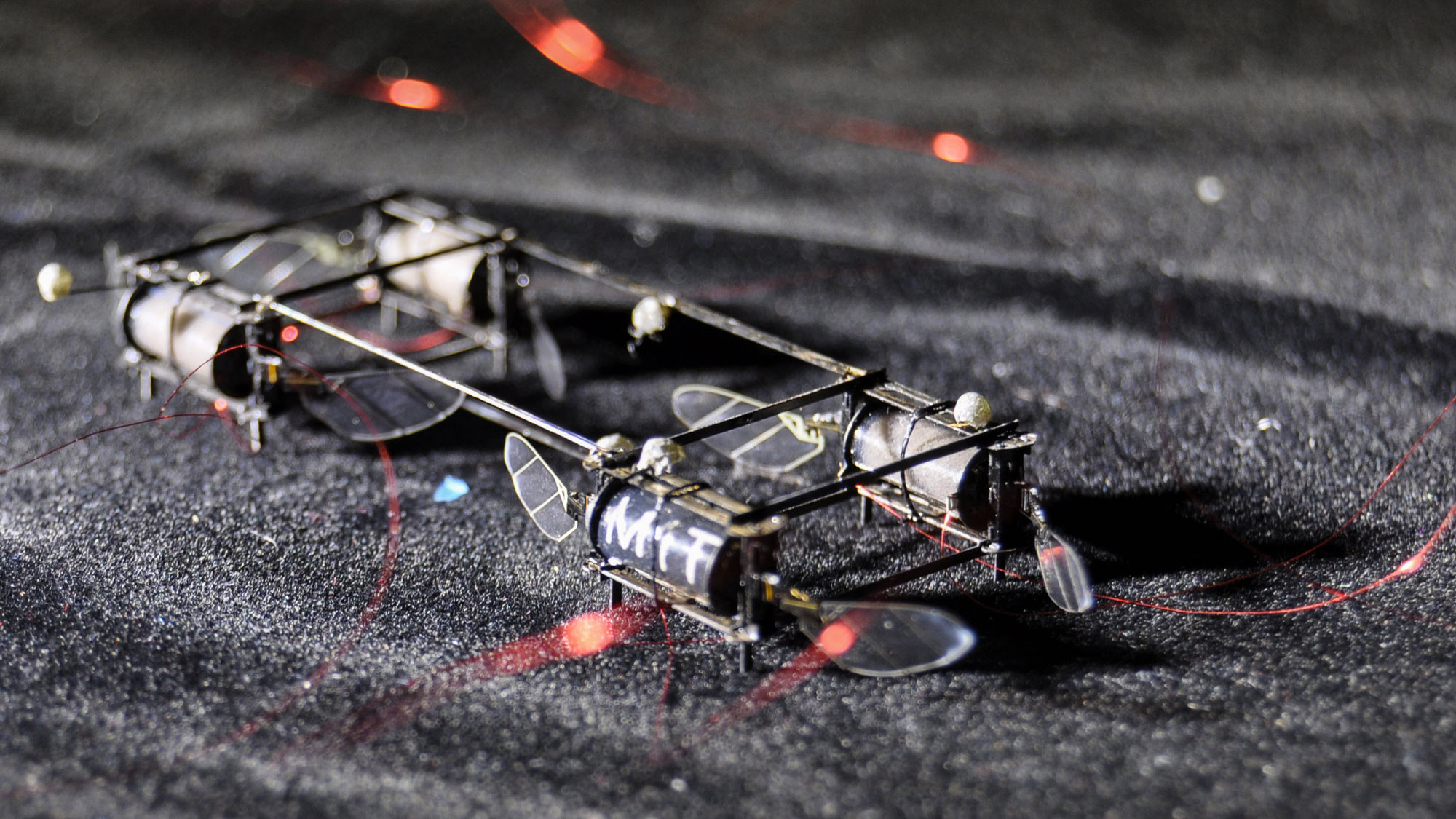Robo-fireflies
Insect-size robots light up to enable motion tracking and communication.

The MIT inventors of tiny artificial muscles that flap the wings of robotic insects have now added electroluminescent particles that enable them to emit colored light during flight, similar to fireflies.
The artificial muscles, called actuators, are made by alternating ultrathin layers of elastomer and carbon nanotube electrode material and then rolling the stack of layers into a squishy cylinder. When a voltage is applied, the electrodes squeeze the elastomer, and the mechanical strain flaps the wing.
To make them glow, electrical engineering and computer science professor Kevin Chen and his team embedded zinc sulfate particles into the elastomer and used a very thin layer of nanotubes to avoid blocking the light. Because the particles light up only in the presence of a strong, high-frequency electric field, they use a high voltage to create such a field in the actuator and then drive the robot at a high frequency. It ends up just 2.5% heavier, and flight performance isn’t compromised.
This capability could enable the robo-bugs to communicate with each other, and it brings microscale robots closer to flying on their own outside the lab. Such lightweight devices can’t carry sensors, so researchers must track them using infrared cameras that don’t work well outdoors. Now the scientists have shown that they can track these robots using the emitted light and three smartphone cameras.
The team is working to incorporate control signals so the robots could turn their lights on and off during flight to communicate. On a search-and-rescue mission, for instance, they could signal for help.
Larger robots can use tools like Bluetooth or wireless to communicate, “but for a tiny, power-constrained robot, we are forced to think about new modes of communication,” Chen says. “This is a major step toward flying these robots in outdoor environments where we don’t have a well-tuned, state-of-the-art motion tracking system.”
Keep Reading
Most Popular
Large language models can do jaw-dropping things. But nobody knows exactly why.
And that's a problem. Figuring it out is one of the biggest scientific puzzles of our time and a crucial step towards controlling more powerful future models.
How scientists traced a mysterious covid case back to six toilets
When wastewater surveillance turns into a hunt for a single infected individual, the ethics get tricky.
The problem with plug-in hybrids? Their drivers.
Plug-in hybrids are often sold as a transition to EVs, but new data from Europe shows we’re still underestimating the emissions they produce.
Google DeepMind’s new generative model makes Super Mario–like games from scratch
Genie learns how to control games by watching hours and hours of video. It could help train next-gen robots too.
Stay connected
Get the latest updates from
MIT Technology Review
Discover special offers, top stories, upcoming events, and more.